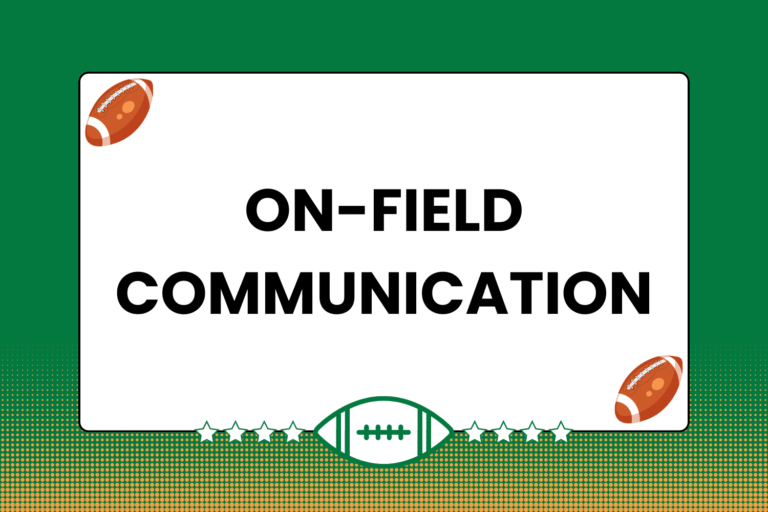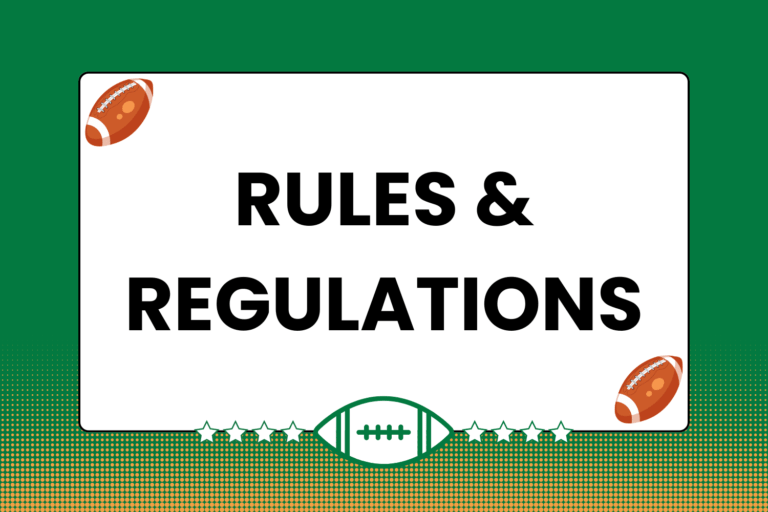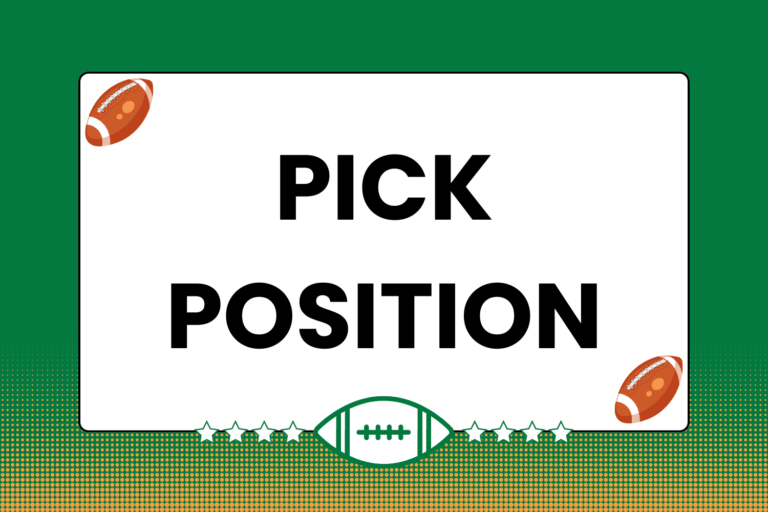The rugby field, or ‘pitch,’ is comparable in size to a soccer (or football) field. While both Union and League rugby fields are very similar in terms of size, the markings are very distinct.
Union Rugby
Because the grounds on which many fields are located vary from place to place, there are a set of minimum and maximum size requirements rather than exact specifications. The level of play also plays a role, as youth players won’t play on the same size field as adult players.
Dimensions
The playing area length—the length of the field not including the in-goal areas—is not to exceed 100 meters (M), and the in-goal areas must be between 10 and 22M deep. With that, the total field length must be between 120 and 144M, and the field must be no more than 70M wide. Also, the playing area is defined by the dead-ball lines, touch lines, and touch-in-goal lines.
Markings
The markings used are the biggest difference between a Union and League field, in that Union games require many more types of markings. The markings listed below are color-coordinated to the above diagram.
Boundary Lines
- Touchline (2x) – No more than 100M, these lines run lengthwise down both sides of the pitch perpendicular to, and at the ends of, both goal lines.
- Goal Line (2x) – No more than 70M, these lines run widthwise down both sides of the pitch at both ends of, and perpendicular to, the touchlines.
- Dead-Ball Line (2x) – The same size as the goal lines, these lines sit between 10 and 22M behind each goal line.
- Touch-in-Goal Line (2x) – These are the lines that perpendicularly connect the touchlines and dead-ball lines. Their length depends on the size of the in-goal area.
Position Lines
- 5-Meter Line (2x) – Two lines of six 1M hashes that run parallel to, and exactly five meters in from, both 5-meters-indicated lines and between both touchlines, placed 5 and 15M from each touchline and in front of both goal posts.
- 10 Meters Lines (2x) – Two lines with small hashes that run perpendicular to both touchlines exactly 10 meters on either side of the halfway Line.
- 22-Meter Lines (2x) – Two solid lines that run perpendicular to both touchlines exactly 22M in from both goal lines.
- 5-Meters-Indicated (2x) – Two lines with small hashes that run parallel to, and exactly 5M in from, both touchlines and between both goal lines.
- 15-Meters-Indicated (2x) – Two lines of 1M-long hashes that run parallel to, and exactly 15M in from, both touchlines and between both goal lines; lines go solid between each end’s 5-meters-indicated line and goal line.
- One line, .5M-long, placed at the exact center of, and perpendicular to, the halfway line.
- Halfway Line – A solid line that runs through the exact middle of the pitch perpendicular to both touchlines.
Equipment
Field Markers: There are 14 marking flags (seven on each side of the field) that are used to determine general position on the field. These flags must be at least 1.2M high and sit at least two meters away from the field at each end of both in-goal lines, both touch-in-goal lines, both 22-Meter lines, and the halfway line.
Uprights: The top edge of the crossbar must be exactly 3M from the ground. The goal posts attached to both ends of the crossbar must be at least 3.4M high and spaced exactly 5.6M apart.
Uprights Pads: Though technically optional, most teams will secure a foam pad around the bottom support of each upright to prevent players from injuring themselves when coming into contact with it. The only stipulation regarding this pad is that the distance from the goal line to the external edge of the padding cannot exceed 300 millimeters.
Ball: A Union ball must meet the following requirements:
- It must be oval and made of four separate panels
- It must be between 28 and 30 centimeters (cm) in length
- Its end-to-end circumference must be between 74 and 77 cm
- Its circumference at the widest point must be between 58 and 62 cm.
- It must weigh between 410 and 460 grams, and support air pressure between 9 ½-10 pounds per square inch.
League Rugby
Though the fields that both Union and League rugby are very similar in size, there are several differences in layout and markings. Here’s a breakdown of the more distinguishing characteristics of a League rugby field:
Dimensions
Much like a Union field, the specifications regarding a League field are a combination of exact requirements and flexible size criteria. The playing-area length (the field between both goal lines) is exactly 100M, and exactly 68M wide. The in-goal areas must be between 6 and 12M deep, which are slightly smaller than Union areas. As a result, the total pitch length must be between 112 and 122M long.
Markings
While there are several markings that both Union and League fields share, the League field is much closer in style to an American football field. This is most predominant in the use of solid lines running the width of the field at exact 10M intervals, much like the yard lines found on an American football field.
Boundary Lines
- Touchline (2x):These lines are exactly 100M, run lengthwise down both sides of the pitch perpendicular to, and at the ends of, both goal lines; these lines are white and 15cm wide.
- Goal Line (2x): These lines are exactly 68M, run widthwise down both sides of the pitch at both ends of, and perpendicular to, the touchlines; these lines are white and 15cm wide.
- Dead-Ball Line (2x): These are the same size as the goal lines, sit between 6 and 11M behind each goal line (depending on the size of the in-goal area); these lines are white and 15cm wide.
- Touch-in-Goal Line (2x): These lines perpendicularly connect the touchlines and dead-ball lines. Their length depends on the size of the in-goal area; these lines are white and 15cm wide.
Position Lines
- Two broken lines run between both goal lines, at 10 and 20M in from both touch lines. These lines are 10cm wide, white in color, and each segment of line must be no more than 2M apart.
- A series of solid lines run perpendicular to the touchlines exactly every 10M from the goal lines; these lines are white and 15cm wide.
- These lines are also numbered; starting from both goal lines and moving towards the middle of the pitch, the first line is marked 10, the next 20, and so on until both sides meet at the middle line – the 50. The numbers are 2M high, and are white with a red outline.
- Of these numbered lines, both 40-meter lines are to stand out from the others so the official can ensure a kickoff has traveled at least 10M.
Equipment
Field Markers: Aside from the numbered lines, the only markers that run every 10M are two ‘posts’ that reside at both ends of each in-goal line, where they meet the touch lines. They must be at least 1.25M in height and made of a flexible material, so that if a player ran into one, he wouldn’t be injured.
Uprights: The base of the uprights is made up of two posts exactly 5.5M apart, and connected by a crossbar that’s exactly 3M from the ground. Both posts are at least 16M in height. However, they are considered to continue upward indefinitely.
Upright Pads: Though optional, most teams wrap the bottom of each upright post with some kind of protective foam padding.
Ball: A League ball is very close in size and shape to a Union ball, though a League ball is slightly smaller, skinnier, and the ends are slightly pointier. A professional ball is to be 27cm long and 60cm in circumference at its widest spot. It should also weigh between 383 and 440 grams.
Nice & Simple
Compared to many other sports, both codes of rugby are very basic when it comes to field and equipment demands. A field, field paint, uprights and a ball are all that’s required to get a game together. Well, those things and players.





